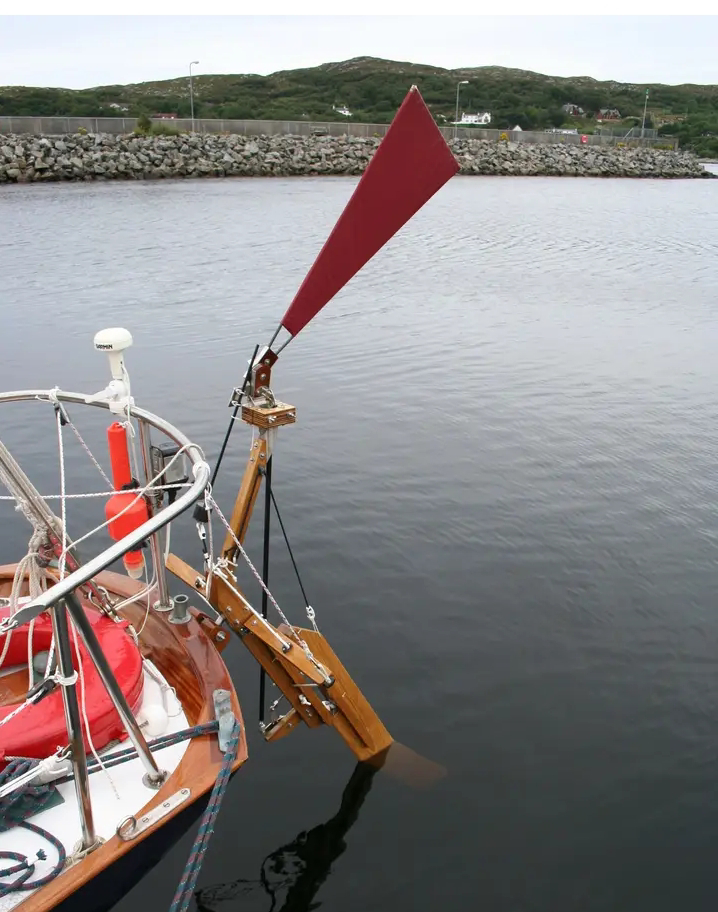Hebridean windvane
I've been making a QME windvane "off the side of my desk " as they say. And as I'm beavering away, gnawing wood and all, I'm thinking about the end product; its fit for purpose and especially its durability. I came to the conclusion that the QME could do the job, but may fade out when its needed most (eg. high winds, running in hard conditions), and it may need babying care. I lile to say clearly, that this view does not relate to the lack of a servo rudder. Previously, I made a QME vane and fitted it to .y previous Folkboat and wasore than happy with the result. Admittedly, the combo were not pushed on winds about 15 knots, but with proper handling I reckon it could go all right.y concern relates to the dry or plane bearings used in the QME. If I do sail for thousands of offshore miles, in all winds, I am doubtful that plane bearings would hold up.
So I remained gruntled ... until I was reading idly about the Jester Challenge and something about the Hebridean Windvane which was "de rigeur among entrants". The Hebra what? I asked quietly.
Well, there's a thing. I knew all about how the Hasler 'vane had been popular among early sailors, Blondie, Howells and co. but the jaunty looking Hebridean had completely escaped my attention. I discovered a video of a crusty old salt building one and taking it for "sea trials" on a river in the UK. Well it did work very well, as well as my old Navic vane. And, hello, it cost less than a fifth of the other servo units on the market. She was within my budget, so I inquired about shipping and Ian got back to me overnight. I've just replied on the affirmative, I just need to get the $s to Scotland and I'll be ony way.
I would mention that the Hebridean comes in kit forms, one is the metal components, make your own timber bits, the other is all the bits ready for assembly. Version two is out of stock, so I still have some woodworking to keep me happy. Winner winner chicken dinner!




Comments
Post a Comment